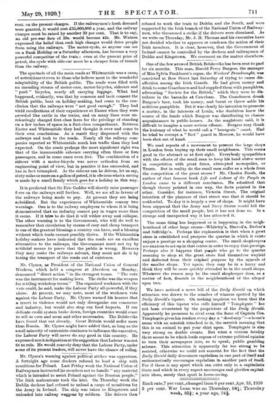The spectacle of all the main roads at Whitsuntide was
a cause of astonishment even to those who believe most in the wonderful adaptability of the British publie. The roads were filled with an unending stream of motor-cars, motor-bicycles, sidecars and " push " bicycles, nearly all carrying. luggage. What had' happened, evidently, was that by common and tacit consent the British public, bent on holiday-making, had come to the con- clusion that the railways were " not good enough." They had vivid recollections of their experiences at Easter when they were crowded like cattle in the trains, and on many lines were un- relentingly charged first-class fares for the privilege of standing on a few inches of space in a first-class compartment. Between Easter and Whitsuntide they had thought it over and come to their own conclusions. As a result they dispensed with the railways and took to the roads. Nearly all the railway com- panies reported at Whitsuntide much less traffic than they had expected. On the roads perhaps the most significant sight was that of the innumerable sidecars carrying often three or four passengers, and in some cases even five. The combination of a sidecar with a motor-bicycle was never orthodox from an engineering point of view, but in practice it has succeeded, and has in fact triumphed. As the sidecar can be driven, let us gay, sixty miles or more on a gallon of petrol, it is obvious what a saving is made by a small family which goes for a holiday in this way.






































 Previous page
Previous page